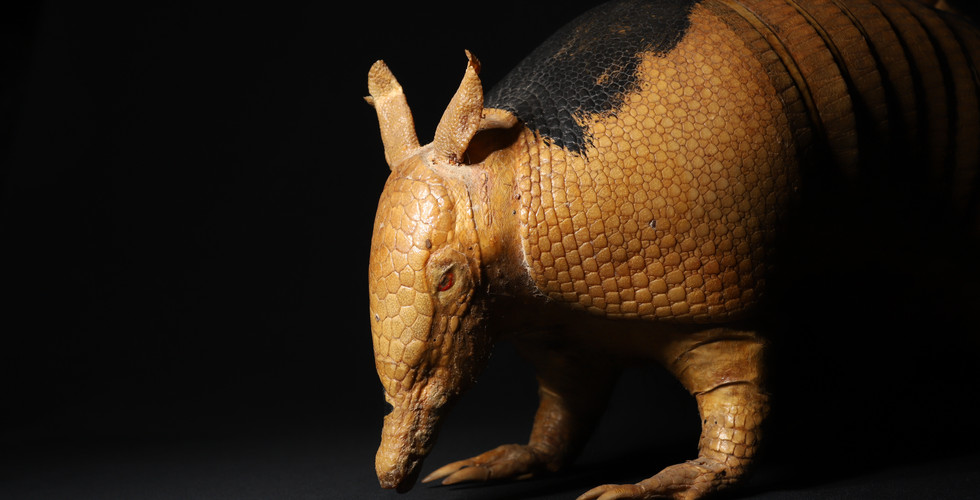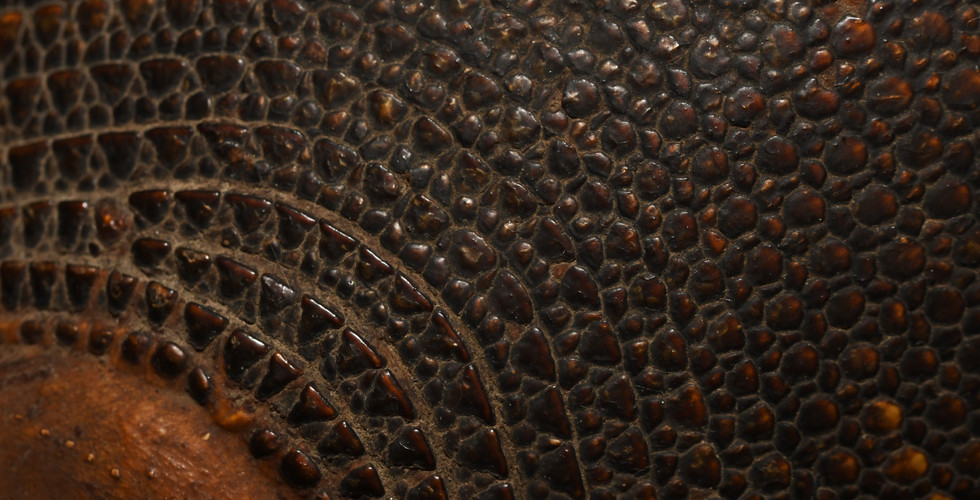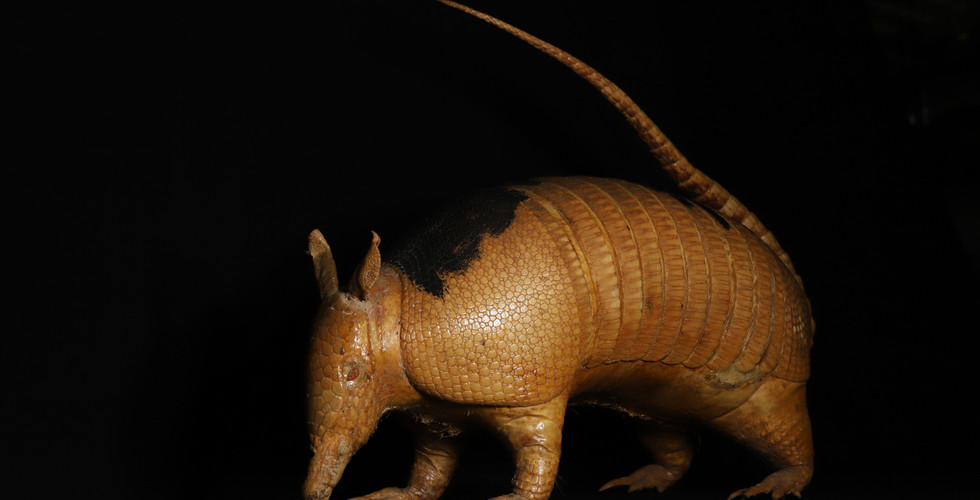Cingulata

Cingulata, from Latin cingulāta (“the girded ones”), in reference to the fact that these animals have a dorsal armor formed by juxtaposed plates, usually arranged in transverse rows.
Common names of members
Armadillos.
Distribution
Central and South America, ranging northwards to central North America.
Size
The average length of an armadillo is about 75 cm, including the tail. There are species that vary between 13-15 cm in length and others up to 150 cm in length and weighing up to 54 kg.
Morphology
They have a dorsal armor formed by juxtaposed plates, generally arranged in transverse rows, a long and cylindrical braincase and a long tail, short limbs and long, sharp claws for digging, but can move quite quickly.
One of the factors that helps in the characterization of Cingulata is their vertebral joints, which have extra articulations that are unlike other mammals. Also, the ischium of the pelvis is fused to the sacrum of the spine.
Ecology & Habitat
Rainforests, grasslands, savannah, wetlands and xeric schrublands.
Diet
Normally omnivorous, their diet consists mainly of insects, larvae and other invertebrates. Some species, however, feed almost exclusively on ants and termites while other species can also eat small vertebrates, plant matter and carrion.
Reproduction
Female armadillos dig burrows and raise their young there. The young are born with soft leathery skin, which hardens within a few weeks. After weaning, they usually stay with their mother for another couple of months then live solitary.
Total species known
20
Species in the collection
2
Species in Hong Kong
0
References
- Gaudin, T. J., Croft, D. A. (2015). Paleogene Xenarthra and the evolution of South American mammals. Journal of Mammalogy, Volume 96(4), 622–634. https://doi.org/10.1093/jmammal/gyv073.
- Vizcaino, S., Loughry, W. J. (2008). The biology of the Xenarthra. University Press of Florida.


































































